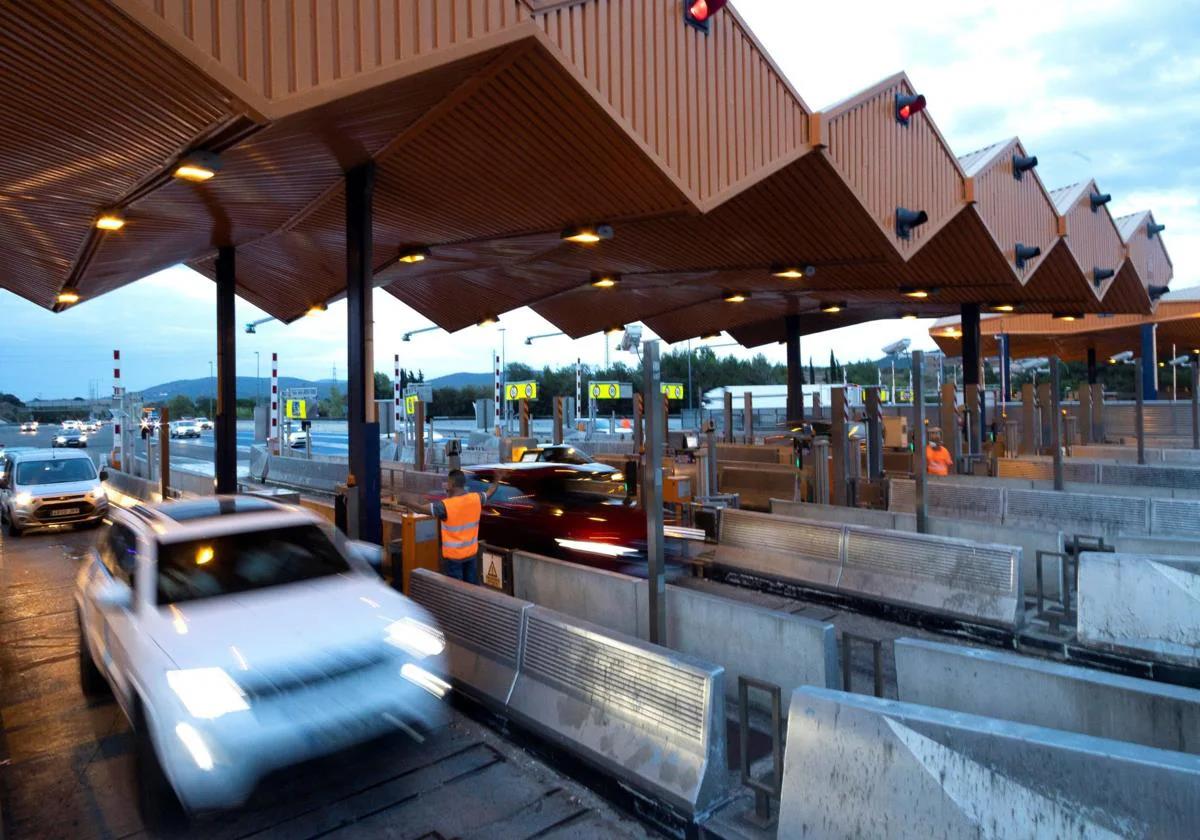

Sections
Highlight

The 600,000 or so drivers who use the toll motorway network in Spain every month will face an increase in toll charges from 1 January 2025. Although the regulations that have been in force for 20 years link this increase to average inflation from the previous year, on 1 January 2025 the rates will rise above consumer price index (CPI) to compensate the operating companies again for the price cap imposed on them in 2023 when, according to the CPI, the tolls should have risen by 8.4%, but the government agreed an increase of only 4%.
To be clear, sources from the motorway toll concession companies have told SUR that the Ministry of Transport will raise prices by between 3.8% and 3.9% as of Wednesday 1 January. The exact increase will be published in the BOE (Official State Gazette) before 31 December.
According to this information, the increase will be one point higher than the CPI to which tariffs are usually linked and which in 2024 closed at 2.9%. This increase above inflation is due to the fact that central government must continue to compensate for the 2023 price cap. However, the increase will be lower than last year's price hike when tariffs were increased by between 5% and 6.65%, the highest rise since the CPI-linked system was approved more than 20 years ago. In fact, both 2023, due to the price cap placed on the toll companies, and 2024 and 2025 together having to provide some recompense to these operators have become the only three years since 2002 in which tolls have not been forced to stay in line with the CPI for the previous year.
Until now the highest increase had been in 2007 when, in line with what was the average for inflation in 2006, tolls rose by 4.5%. The increases in recent years were much lower, with a tariff increase of 1.97% in 2022, 0.11% in 2021, 0.84% in 2020 and 1.2% in 2019.
The cap imposed on the 2023 toll price increase was intended to soften what would have been a record-breaking increase in motorway tariffs, a cost that users could not have afforded at a time of inflationary crisis. However, it was agreed to continue compensating the operating companies until 2026 for this price cap by allowing what was not paid in tolls in 2023 to end up being paid by users in smaller increments in the following years. A financing line of 23.3 million euros was also established.
The concessionaires of the network of 1,435 kilometres of state toll roads (the main operators being Abertis, Itínere, Glovalbía and Ausol), with a turnover of around 1.5 billion euros per year, did not accept losing half of the price increase they wanted and which would have been in line with CPI in 2023. For this reason, and after some intense negotiation, Spain's Ministry of Transport agreed to this compensation for them, although it was far from what these companies were requesting.
The update of tariffs will take place as of Wednesday 1 January on the eleven toll motorways: AP-51, AP-61, AP-6, AP-53, AP-66, AP-7 Alicante-Cartagena, AP-7 Malaga-Guadiaro, AP-68 and AP-71, AP-9 and AP-46. For the nine rescued motorways managed by SEITT (Sociedad Estatal de Infraestructuras de Transporte Terrestre), including the Madrid ring roads, the Ministry has decided to raise rates by 5% as of 1 January, as published in the BOE (Official State Gazette) a week ago. Specifically, the average increase is 5%, but it will be very different for users with Tag (an in-car, electronic toll collection device), who will see an 11% increase in fares compared to 2% for those who do not have this device. According to the Ministry of Transport the higher increase is due to EU taxes on providing the additional infrastructure for tagging.
In addition, central government approved that from 2026 the annual increase in the tariff for these roads until 2032 will be 2% for all categories of vehicles. Likewise, it will continue to be free to use these roads between midnight and 6am every day of the year.
Publicidad
Publicidad
Publicidad
Publicidad
Esta funcionalidad es exclusiva para suscriptores.
Reporta un error en esta noticia
Comentar es una ventaja exclusiva para registrados
¿Ya eres registrado?
Inicia sesiónNecesitas ser suscriptor para poder votar.